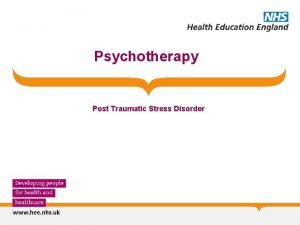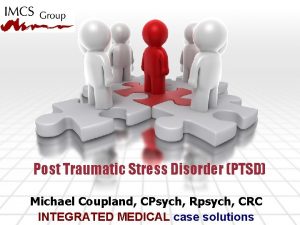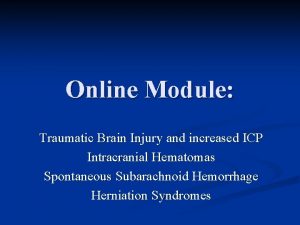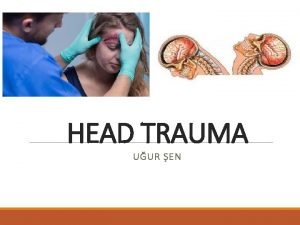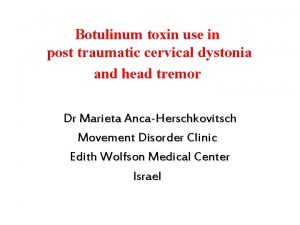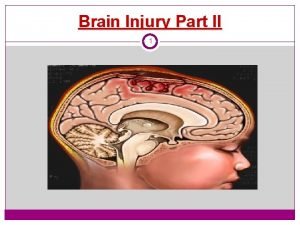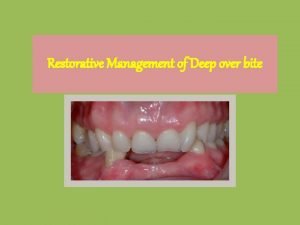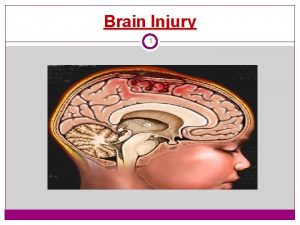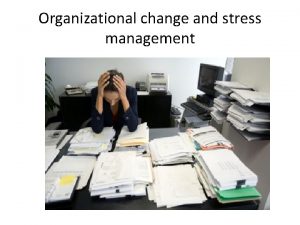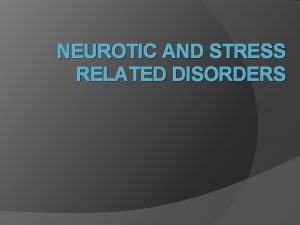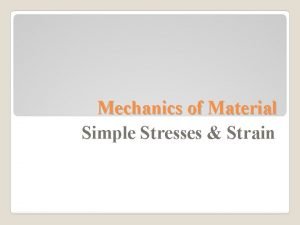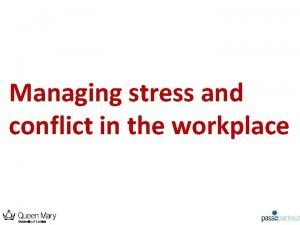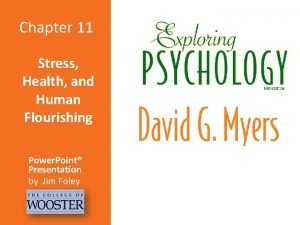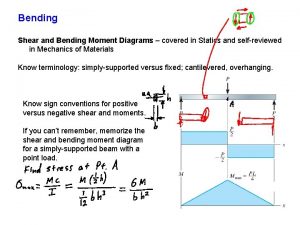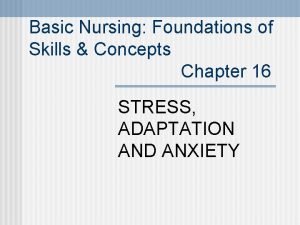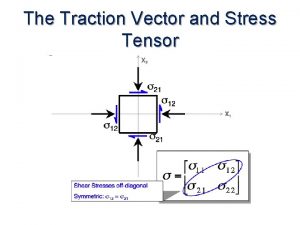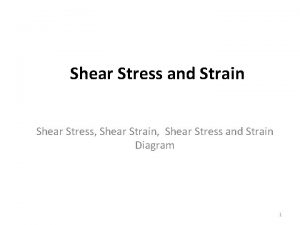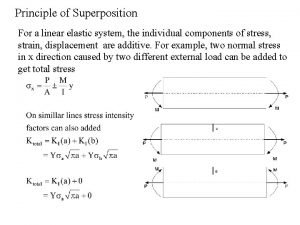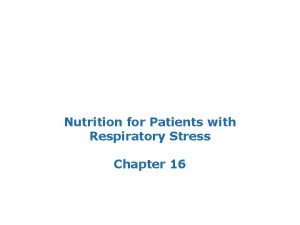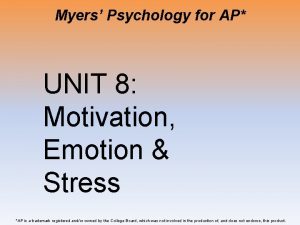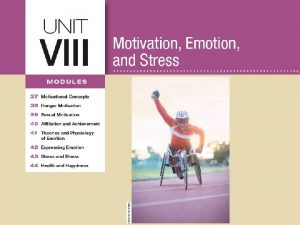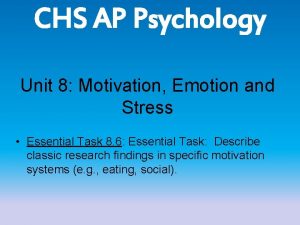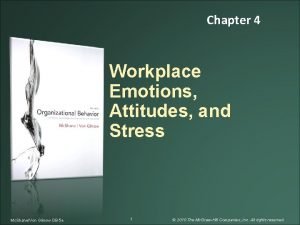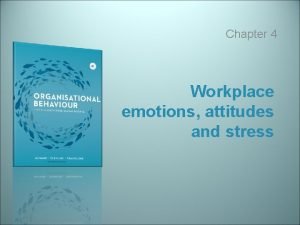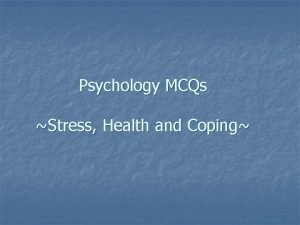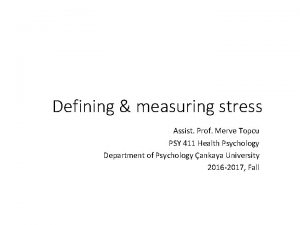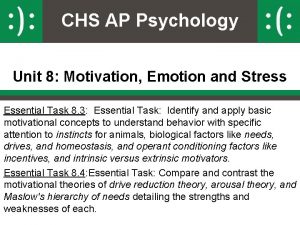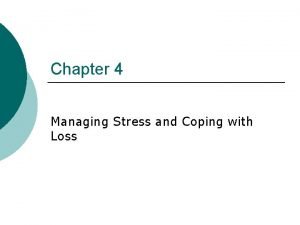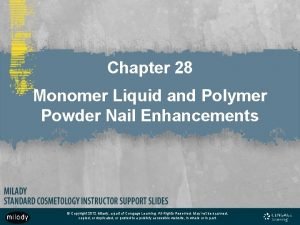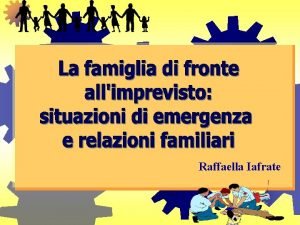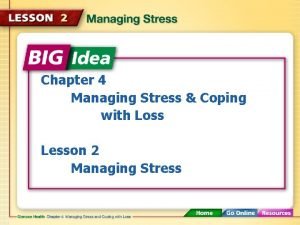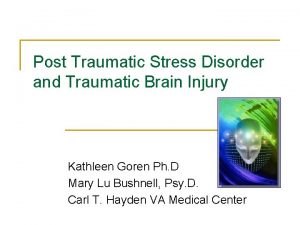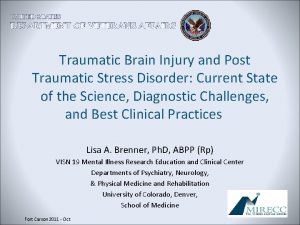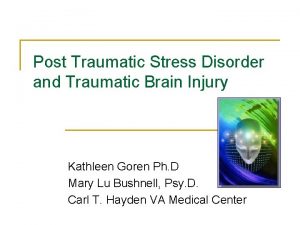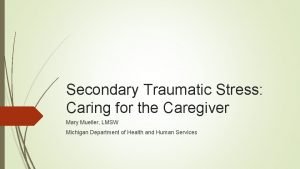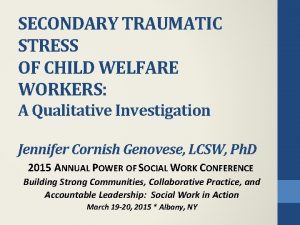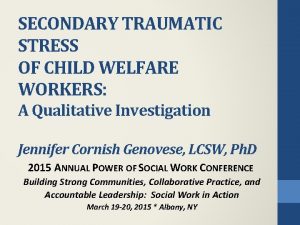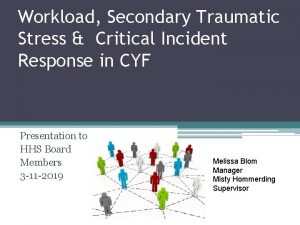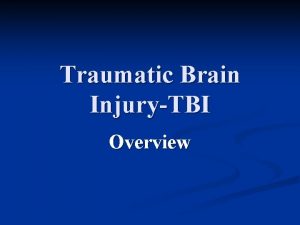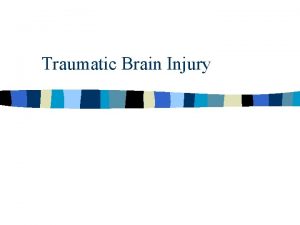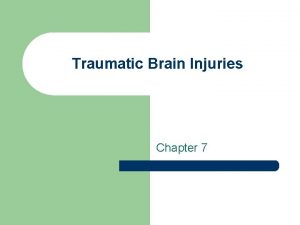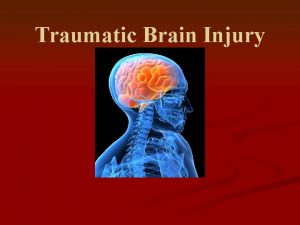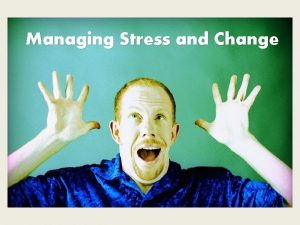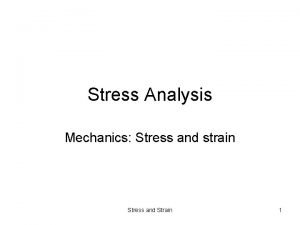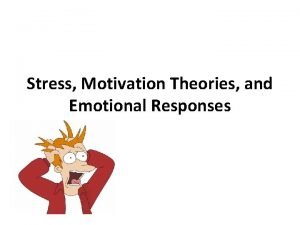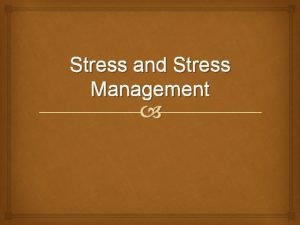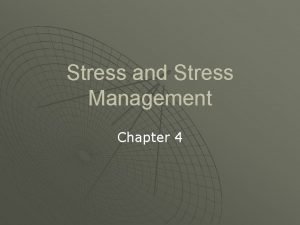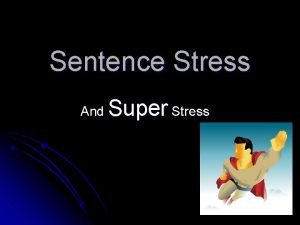Secondary Traumatic Stress What is it and Why































































- Slides: 63

Secondary Traumatic Stress What is it and Why Do We Care? Brenda Bash, MS Crisis Intervention Services

http: //www. youtube. com/watch? v=Xfm. VBm DKLZI

Secondary Traumatic Stress What is it? What does it look like? What can we do about it?

Secondary Traumatic Stress WHAT IS IT? • AKA: vicarious trauma, compassion fatigue • It is the resulting effects of chronic exposure to traumatic material • Symptoms are the same as those experienced by direct exposure • First noticed in ER nurses who had “lost their ability to nurture” (Boyle, 2011)

It’s just like regular trauma Hyper vigilance Abnormal responses to normal situations (triggers) Withdrawal Avoidance

Trauma A person has experienced trauma if: Must feel fear, helplessness or horror (APA, 2000) Our response to trauma is innate-our body is built to respond to trauma “A normal reaction to an abnormal event” that can result in…

An abnormal reaction to a normal situation


“Most of us are abnormal in one way or another. The thing that separates us is not the presence or absence of abnormality but rather the depth at which our abnormalities control our lives” Dr. Greg Moffatt, Survivors, p. 50

Trauma is subjective

Traumatic Exposure • Experience of events that involved threat of death • Experience of events that cause or threaten serious injury to self or others • Experience of events that cause or threaten sexual or physical violence • Witness any of the above

Traumatic Exposure • Learning of harm coming to a close friend or relative • Repeated exposure to aversive details of unnatural death, serious injury, assault or sexual violation (vicarious trauma) *does not include media

Credit Due Rebecca Campbell Ph. D. Michigan State University

The trauma parts • Prefrontal Cortex – Uniquely human – Takes in information – Weighs options – Makes decision – Executes THIS PART IS OFFLINE • Limbic system – Old brain – Keeps you alive – 4 structures

The 4 parts involved in trauma • The Amygdala- the lookout- constant scan for threat – Get focused – Remember this • The Hypothalamus – Breaking news • The Pituitary – The master gland… hey, adreanals! send help! • The Hippocampus – The OCD librarian

Adrenals: HERE I come to save the DAYYY!! • Catecholemines • Cortisol • Opioids • Oxytocin

CHATECHOLAMINES • Your fight or flight hormones

CORTISOL • The energy…or lack of…to act – No energy…freeze – Military and LE train to NOT freeze by desensitizing the body to trauma. But it isn’t always foolproof. – You don’t decide which of these you use http: //www. youtube. com/watch? v=Od. OOIxc. Uj. As

Opioids • Prevent and manage pain • Blocks pain…can block everything • HPA can be reactivated retelling the story…high release of opioids…no emotion

OXYTOCIN • Promotes positive feelings • Prevents pain by increasing the good • Laughing, giddiness

Reminder • We don’t control or pick or decide what combinations of hormones are released or their cycles. • What is released into your blood determines behavior

Stress & Immunity 32 men 1 time paced memory test (active coping) 1 “gruesome” surgical video (passive coping 1 control TV show OSU Researchers measured their saliva for levels of S-lg. A…immunoglobin that regulates immune and inflammatory responses and protecting mucosal surfaces against invasion by parasites

What they found 1. Taking the test increased the output of Slg. A 2. Within 10 minutes of watching the videooutput of S-lg. A decreased. “We conclude that acute stress can have both enhancing and suppressive effects on secretory immunity, the Ig. A 1 subclass in particular” (Bosch, J. et al; 2001) Type of stress matters.

“The expectation that we can be immersed in suffering and loss daily and not be touched by it is as unrealistic as expecting to be able to walk on water without getting wet. This sort of denial is no small matter” Rachael Naomi Remen, M. D.

Recognizing STS MANIFESTATIONS Emotional Intellectual Physical Social Spiritual Work

Recognizing STS Emotional: Anger Apathy Cynicism Desensitization Discouragement Irritability Lessened Enthusiasm Hopeless Sarcastic

Recognizing STS Intellectual/Cognitive Difficulty concentrating Weakened attention to detail Disorderliness

Recognizing STS Physical: Increased somatic complaints GI, headache, insomnia Lack of energy/endurance More prone to accidents Weariness, fatigue, exhaustion

Recognizing STS • Social: Callousness Feelings of alienation, estrangement, isolation Indifference Loss of interest in activities once enjoyed Unresponsiveness Withdrawal from family &/or friends

Recognizing STS • Spiritual: Decrease in discernment Disinterest in introspection Spiritual awareness Poor judgment


Recognizing STS • Work Absenteeism/Tardiness Avoidance of intense client/victim/patient situations Desire to quit Diminished performance Stereotypical/impersonal communication

• Negative bias, pessimism • Loss of perspective and critical thinking skills • Threat focus – see clients, peers, supervisor as enemy (Tullberg, 2012)

“My glass is not only half-empty, I'm convinced someone spit in it. ” ― Judy Nichols, Sportsman's Bet

System-Level Impact Distrust among collaborators/co-workers (Hyperarousal) + Decreased motivation/increased absenteeism (Withdrawal) + Compromised ability to manage clients’ trauma reactions (Avoidance) + Loss of perspective and critical thinking (Hyperarousal) =

System Level Impact Professionals that don’t show up 100% & Poor outcomes

So now what? ?

Resilience 1: the capability of a strained body to recover its size and shape after deformation caused especially by compressive stress 2: an ability to recover from or adjust easily to misfortune or change (Merriam-Webster, retrieved 2012)

Resilience is not a trait that people either have or do not have. It involves behaviors, thoughts, and actions that can be learned and developed in anyone (APA, retrieved 2012)

Individual Level Compassion Satisfaction Social Support Positive emotions Intentional Optimism

Managing STS Compassion satisfaction A sense of reward, efficacy and competence in the role of helping others Killian (2008)

Pro. QOL http: //proqol. org

Measuring CS & CF: The Professional Quality of Life Scale (Pro. QOL) • The Pro. QOL is free • A 30 item self report measure of the positive and negative aspects of caring • The Pro. QOL measures Compassion Satisfaction and Compassion Fatigue • Compassion Fatigue has two subscales – Burnout – Secondary Trauma © Beth Hudnall Stamm, 2009. www. Pro. QOL. org

Well Established • The Pro. QOL is the most widely used measure of the positive and negative aspects of helping in the world • The Pro. QOL has proven to be a valid measure of compassion satisfaction and fatigue • It has been used for over 15 years • The measure was developed with data from over 3000 people © Beth Hudnall Stamm, 2009. www. Pro. QOL. org

Social Support Check in with colleagues - they understand your language/humor - confidentiality Have “normal” friends - reciprocate Formulate an “A-Team”

Positive Emotions They are developed in times of safety and rest Positive emotions have the ability to undo the negative effects of traumatic stress -decrease heart rate, vasoconstriction, blood pressure -increases cognitive ability

Positive emotions JOY

Positive Emotions GRATITUDE

Positive Emotions SERENITY

Positive Emotions INTEREST

Positive Emotions AMUSEMENT

Positive Emotions INSPIRATION

Positive Emotions AWE

Positive Emotions PRIDE

Positive Emotions HOPE

Positive Emotions LOVE

Train Your Brain Practice intentional optimism Anticipate the best possible outcomes… On purpose.

Louis CK on perspective: http: //www. liveleak. com/view? i=aba_133265 6862

Perspective is everything “Everything can be taken from a man but one thing: the last of the human freedomsto choose one’s own attitude in any given set of circumstances, to choose one’s own way. ” Viktor Frankl, 1945

And one more thing… Mindfulness is good for your brain. http: //www. youtube. com/watch? v=LIZArf. QHOo

Organizational Level Change in work culture Top level “buy in” Difficult case processing/ formal & informal Resilience Alliance

Final thoughts Questions?

Contact information Brenda Bash, MS Crisis Intervention Services 641 -670 -0048 brendab@stopdvsa. org
 Cptsd
Cptsd Diagnosis of post traumatic stress disorder
Diagnosis of post traumatic stress disorder Post traumatic stress disorder
Post traumatic stress disorder Why why why why
Why why why why Uncal herniation
Uncal herniation Traumatic subdural hematoma
Traumatic subdural hematoma Damselfly
Damselfly Post-traumatic cervical dystonia
Post-traumatic cervical dystonia Traumatic brain injury concept map
Traumatic brain injury concept map Traumatic overbite
Traumatic overbite Tbi concept map
Tbi concept map Csf traumatic tap
Csf traumatic tap Hyponuria
Hyponuria Tbi long term servival after traumatic
Tbi long term servival after traumatic True
True Chapter 10 stress responses and stress management
Chapter 10 stress responses and stress management Stress bearing areas of mandible
Stress bearing areas of mandible Axial stress definition
Axial stress definition Dont ask
Dont ask Why-why analysis
Why-why analysis Wh tongue twisters
Wh tongue twisters Does this table represent a function why or why not
Does this table represent a function why or why not Does the table represent a function why or why not
Does the table represent a function why or why not Why or why not
Why or why not Why why analysis
Why why analysis Change and stress management
Change and stress management Hookes law stress strain
Hookes law stress strain Neurotic stress related and somatoform disorders
Neurotic stress related and somatoform disorders Mechanics of material
Mechanics of material Stress curve and phases
Stress curve and phases Stress and conflict introduction
Stress and conflict introduction Chapter 8 managing stress and anxiety
Chapter 8 managing stress and anxiety Design philosophy of steel structure
Design philosophy of steel structure Chapter 4 managing stress and coping with loss
Chapter 4 managing stress and coping with loss Chapter 18 organizational change and stress management
Chapter 18 organizational change and stress management Psychodynamic and humanistic therapies have in common
Psychodynamic and humanistic therapies have in common Stress health and human flourishing
Stress health and human flourishing Bending moment diagram
Bending moment diagram Stress and adaptation fundamentals of nursing
Stress and adaptation fundamentals of nursing St venant principle
St venant principle Shear stress sign convention
Shear stress sign convention Shear strain
Shear strain Principle of superposition in stress and strain
Principle of superposition in stress and strain Respiratory stress
Respiratory stress Neurosis disorder
Neurosis disorder Myers ap psychology unit 8
Myers ap psychology unit 8 Module 43 stress and health
Module 43 stress and health Stress that squeezes and shortens rock
Stress that squeezes and shortens rock Unit 8 motivation and emotion
Unit 8 motivation and emotion Workplace emotions attitudes and stress
Workplace emotions attitudes and stress Workplace emotions, attitudes, and stress
Workplace emotions, attitudes, and stress A level physics stress and strain
A level physics stress and strain What is a weak syllable
What is a weak syllable Stress-strain relationship of anisotropic materials are
Stress-strain relationship of anisotropic materials are Health psychology mcqs
Health psychology mcqs Stress appraisal and coping
Stress appraisal and coping Instinct ap psych definition
Instinct ap psych definition Chapter 4 managing stress and coping with loss
Chapter 4 managing stress and coping with loss As monomer liquid absorbs polymer powder
As monomer liquid absorbs polymer powder Motivation and stress management
Motivation and stress management Family stress and coping
Family stress and coping Burnout and stress
Burnout and stress Combined axial and bending stress
Combined axial and bending stress Chapter 4 managing stress and coping with loss
Chapter 4 managing stress and coping with loss
